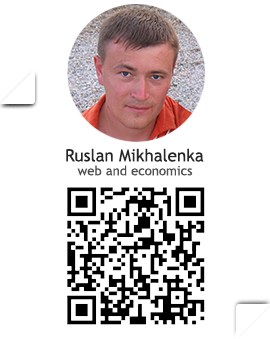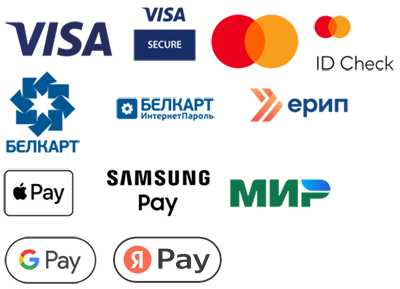The essence of the cost accounting system
The topic of cost calculation is very capacious - a lot of things are divided into something there, types of classifications, structures, approaches, etc.
Let's approach the disclosure of the essence of the topic from the point of view of only things necessary for understanding in this area - to understand how to calculate the cost and what is its importance in business management.
For all types of production activities , it is necessary to calculate costs for three purposes:
- accounting
- tax accounting
- management accounting
If for the first two, for the most part, there is no special difference at all, how to bring everything down, the main thing is to bring it right, then for management accounting this is a very important argument in making economically correct decisions.
What does it mean?
The cost price must be considered not only in order to simply find it out - there is a plus (meaning profitability) or a minus, relative to the sale price, but to a greater extent to understand the attractiveness of products and proper production management in conditions of multi-nomenclature activity.
This attractiveness is determined to a greater extent by margin profitability. It, in turn, is obtained due to the difference between the sale price and the variable costs of each product.
The importance of correct cost calculation lies precisely in the allocation of its part in the process of calculating the nominal variable, which directly affects the attractiveness of the product from an economic point of view. From here, it becomes possible to derive both the added value of the product and its break-even point.
The calculation of the cost of a product is always reduced to the calculation process with the allocation of direct costs and indirect, which, in turn, are further divided into variables and constants.

Next, on the concrete example, we will decompose all this on our fingers.
Calculation methods
All costs are grouped in the process of calculation and summary accounting, both by economic elements, the same is true for costing items.

Economic elements – this is the primary source of costs, the nature of which is initially formed by an external transaction (primary essence)
These include:
- material costs – raw materials/materials and energy resources
- labor costs
- deductions for social needs (deductions from the wage fund)
- depreciation
- taxes
- other costs (services from outside)
Calculation cost items are already grouped economic elements within each accepted accounting group:
- technological raw materials and energy resources (raw materials, materials, energy)
- costs of the main production workers(wages)
- repair and maintenance of equipment (materials, energy, wages, depreciation, other)
- general production expenses (materials, energy, wages, depreciation, other)
- general economic expenses (materials, energy, wages, depreciation, other)
- business expenses (materials, energy, wages, depreciation, other)
The cost accounting method for calculation items is more characteristic and preferable for accounting, because it provides more synthetics of cost accounting. In other words, it simplifies, groups, combines costs for their subsequent accounting in the manufactured products, its transfer to the warehouse, sales, etc.
It is one thing to detail the costs constantly on the primary accounting accounts (materials, energy, labor, services), and another for synthetic groups, which already include materials, energy, labor, etc.
In accounting, these groups are distinguished by the following types of accounting accounts:
- 20 "Main production"
- 23 «Auxiliary productions»,
- 25 "General production costs"
- 26 "General economic expenses"
- 97 "Expenses of future periods", etc.
In other words , it 's easier for accounting !
For management accounting, it is more expedient to keep cost accounting for economic elements, because this allows you to directly assess the impact of the volume and price directly of the target primary source of costs.
For example, it will not cause any difficulties to determine the impact of some material as part of the indirect costs of an organization on the business economy. And now try to do the same when accounting for calculation items of costs, pulling this material from the composition of general production costs, which in turn can be included in the general economic (D sch.26 To sch. 25 | D sch.25 To sch. 10)
Semi-finished and peredelny method of cost accounting
The semi-finished method of cost accounting involves the inclusion of the cost of one product in the composition of another in a multi-stage production process. I.e., for example, to produce product A, it is necessary to obtain product B, which will be included as a raw material element / semi-finished product in the composition of the target product A. It should be understood that product B in its composition may also have many inclusions of other products.
The marginal method of cost accounting assumes the inclusion in the cost of one product of a decomposed chain of costs from the initial (primary) elements (materials, energy, labor, services). I.e., the cost of the product is initially formed by economic elements (there are no semi-finished products). The use of this method is more typical for a one-stage production process, but not always.
When calculating the cost of a unit of production by calculating cost items and by the semi-finished method, the allocation of variable and constant parts of it in the cost price (which is very important for management) is a time-consuming process and practically impossible with a large inclusion of semi-finished products of one into another. Each semi-finished product will contain as part of its cost price both a variable part of the costs and a constant, which must also be laid out in order to isolate the target product in the total composition.
Actual and planned cost
Actual accounting simply ensures the accumulation of all costs for the reporting period and their distribution in accordance with the accepted accounting policy of the organization by product type. Dividing the distributed costs by the volume of output gives the cost of 1 unit.
Planned accounting provides rationing of direct variable costs, limiting direct fixed and indirect costs of the organization in the forecast period. Which is more typical already for management.
Of course, planned accounting should always be based on the actual one, and it is important for management that the structure, the algorithm of actual accounting should always be coupled with the planned one - in order to understand where and at what expense, and how further this may affect the overall result in subsequent planning.
How costs are divided and distributed in management accounting
For example, there is a certain production (business/commercial activity) that produces four types of products - Product A, B, C, D.
Always the production of any kind of products is associated with two areas of activity:
- main
- serving
The main – is an activity directly related to the release/production of the main products that are sold later and income (revenue) comes from its sale.
There can be a lot of products, and therefore multi-nomenclature production usually involves the division of the main activity into several sections, for which the release of if not one, then several types of manufactured products is assigned.
The main production is divided conditionally into three sections.
The 1st section produces product A, the 2nd product B and the third product C and D.
The division of the main production into sections is done in order to correctly account for the distribution of costs and effective management of the economy. Management needs to clearly understand which types of products directly concentrate what costs and how they can affect the economy of the organization as a whole.
The costs incurred by the main production are usually defined as direct.
Direct, because they directly relate to certain types of products.
Among other things, direct costs are always divided into variables and constants.

Direct variable costs
There is a machine operating on site 1 that produces product A. For its release, it is necessary to spend a certain amount of raw materials (From 1, C2), energy resources (E1, E2), labor (payment for work at piecework rates - the normalized work of a pieceworker). The more products, the more these costs. And vice versa - the smaller the production, the less these costs.
The amount of these costs directly depends on the volume of output and therefore refers to direct variables. Zero output means zero of these costs.
We understand that proportionality is observed in this area of costs. In this case, there is a normalizability of all cost elements. I.e., the consumption rate of raw materials / materials, energy and labor is set for 1 unit of production. Labor in direct variable costs is mainly piecework. Each labor is normalized relative to each type of product that the pieceworker makes.
Direct – because they relate directly directly to a specific product (in this case A), and variables because they correlate proportionally with the volume of output.
Direct fixed costs
In addition, in order to produce product A, it is necessary to bear other costs for the period during which its production is carried out, as well as lighting of the site, its heating and payment for the work of an unnormalized employee (foreman of the site, etc.).
There are already direct fixed costs.
Why direct – because they also relate directly directly to a specific product (in this case, only to product A), and constant, because they do not correlate with its output volume. No matter how much they release, these costs will always be approximately at the same level. This approximation sometimes gives them a prefix in the name – conditionally constant. Even the minimum release of this product will require the maintenance of the entire site for the entire period as a whole and the costs are almost the same.
On site 2, the product is produced in a similar situation.
On site 3, 2 products C and D. are produced.
A distinctive feature here from the two previous sections is that the direct fixed costs associated with lighting, heating and payment of 2 workers with a time-based system must be distributed between these two products.
Usually, for these purposes, the accounting policy determines the basis for the distribution of such costs and, in proportion to it, costs are attributed (in accordance with the shares) to product C and D from the total amount for the site for the period, or by a direct method based on any other features taken into account.
If variable costs are always tied to the volume of output of a product/service, then constant costs are related to the period (time interval) of activity.
Indirect costs
If direct costs are directly related to the main activity of the business (output of products/services), then the servicing one is the one that ensures the work of the main one due to its indirect influence on it:
- management/business management
- auxiliary production facilities serving the main activity
Management carries out work related to the administrative activities of the organization.
This activity always requires expenses related to the provision of:
- materials - paper, stationery, etc.
- energy resources – lighting, heating of the administrative building
- labor - wages of people with time-based wages
- social contributions
- depreciation - partial write-off of the residual value of buildings, structures, computer equipment, etc., which is on their balance sheet, at cost
- taxes – tax on real estate, land and other tax deductions
- other expenses – business trips, executive, transport, etc.
Auxiliary production has similar costs.
The functions of auxiliary units usually include cleaning, technical, technological maintenance, etc.
The main production produces a lot or a little of products /services, and the maintenance of these divisions is carried out approximately in the same volume (if there is no way without them, of course).
Overhead is direct constant + indirect, which by default are always constant.
How to calculate the calculation of the cost of production and cost estimates on a simple example
The calculation of the cost calculation allows you to get the cost of producing a unit of product and plan its minimum economically acceptable price level.
When calculating, it is always important to allocate its variable part on the basis of which reliable conclusions can be drawn about the economic attractiveness of the product/service.
Using a simple example, using online calculator cost calculation, we will calculate the calculations for each type of product and estimate for the analyzed period by economic elements.
The data used is fictional and is used in calculations only to reveal the essence of the topic.
Mini-confectionery company produces 4 types of product:
- Cake 1000 g. (pcs.)
- Cake 150 g. (pcs.)
- Gingerbread 750 g.(package)
- Cookies 800 g. (package)
In addition to the main production, the balance sheet also contains an administrative building with engineering and technical personnel.
Task:
- For each type of product:
- calculate the unit cost by economic elements and cost estimates for the period
- analyze the cost structure
- calculate profitability, profitability, marginality, value added, break-even point and, based on this, determine their economic viability
- To reduce the total cost estimate by types and directions of costs
- Determine the total demand for raw materials/material, energy and labor resources for the period of activity, taking into account the adopted program of production and sale of confectionery products
- To estimate the overall economic result of the activity for the period under study
The estimated period is 30 days.

Currencies in which settlements with counterparties are carried out – RUB (Russian ruble), BYN (Belarusian ruble) and USD (US dollar)

The currency of the final calculations is USD

The value of all assets (products, raw materials, materials, fuel and energy, labor, fixed assets, services, etc.) used in calculations is indicated in the currency for which they are purchased / sold on the side.
Volume of production and sales, approximate level of competitive price (minimum market price for a similar product) by types of products to enter the market:

All types of raw materials and materials used in the activity and their purchase price (to ensure the main and service activities):

All types of energy resources used in the activity and their purchase price (to ensure the main and service activities):

In the main production, workers work according to the piecework wage system, whose wages directly depend on the volume and type of manufactured products.
The work of pieceworkers must be normalized by specifying the rates by profession for the corresponding types of products.

Shop and engineering personnel are employees with a time-based wage system, whose wages are determined by the cost of 1 hour of work in the relevant profession. These include:
- Shop floor:
- the receptionist - 4 people.
- operator - 4 people
- master – 2 people
- ITR:
- economist- 2 people
- accountant – 1 person
- director – 1

We will accept mandatory deductions from the wage fund, which also relate to expenses, at the standard level of 36% (deductions to the social protection fund + insurance premium)

Depreciable objects of the enterprise that are on its balance sheet, the cost of which is written off to the cost price through depreciation deductions.
* If the depreciation object participates in the production of several types of products, then it will be necessary to divide the initial cost of this object into parts by a direct method to assign them further (in the direct fixed costs block) to the corresponding products.
In this case, depreciation charges will be calculated using a linear method based on the remaining service life of the object, its cost and the number of days in the analyzed period.

Taxes included in the cost price for the period in absolute value.

Other costs that the company may incur for the period.

The source data block is full.
We turn to rationing costs (direct variables) and filling overhead costs (direct constants + indirect).
Direct variable costs
We normalize the direct variable costs per unit of each type of product.
According to :
- by the recipe of the planned production, we specify the consumption rates of the main raw materials
- with the installed capacity of the main technological equipment and technological regulations, we specify energy consumption rates
- rates of piecework by profession by types of products specified in the source data block, their values will be entered automatically
Cake 1000 g.

Cake 150 g.

Gingerbread 750 g.

Cookies 800 g.

Direct fixed costs
We indicate the direct fixed costs for the period for each type of product, if the division of the corresponding items for assignment to target products was initially made in the source data block.
So, for example, the wages of compilers (with a time-based wage system) who serve all types of products and will work only 22 working days out of 30 calendar days (the project analysis period) will be distributed among all 4 types of products, i.e. 5.5 hours for each.
A similar approach is also applied to materials (write-off of rubber gloves for the needs of the workshop for the period), energy resources (write-off of electricity for lighting, heat for heating the workshop for the period), depreciation and other overhead costs within the framework of direct permanent distributable.
If the distribution of these types of costs causes difficulties, it is advisable to include all of them in indirect costs (hereinafter referred to as), which will already be distributed by product types in accordance with the specified database (application selection option) in automatic mode.
Cake 1000 g.

Cake 150 g.

Gingerbread 750 g.

Cookies 800 g.

Costs that cannot be tied directly to any type of product are attributed to indirect costs.
The company will carry them regardless of the volume of products. These are overhead costs and they are always constant.
This includes the 30-day consumption of materials for the maintenance of the main production and administrative building, their energy supply (lighting, heating, ventilation, air conditioning), remuneration of time workers (IT), depreciation, taxes (included in the cost price), other expenses.

When calculating, these costs will be distributed by product types in accordance with the selected distribution base.
We will calculate the calculations and the total cost estimate for the economic elements for the analyzed period (30 days).
The distribution of indirect costs is carried out in proportion to the sum of direct variable costs for each type of product.

We make calculation and get the necessary results.
Cost and profitability analysis by product type - calculations, cost estimates




















































Total cost/cost analysis












Analysis of the overall profitability/profitability of the enterprise






The obtained data on the calculation of cost indicate the economic viability of each type of product and activity as a whole .
By analyzing the sensitivity of the project, you can find additional reserves to increase the profitability of the business, taking into account its marginality for each type of product, or vice versa - critical points to maintain its break-even.
How to calculate the cost of production - Something like that!































